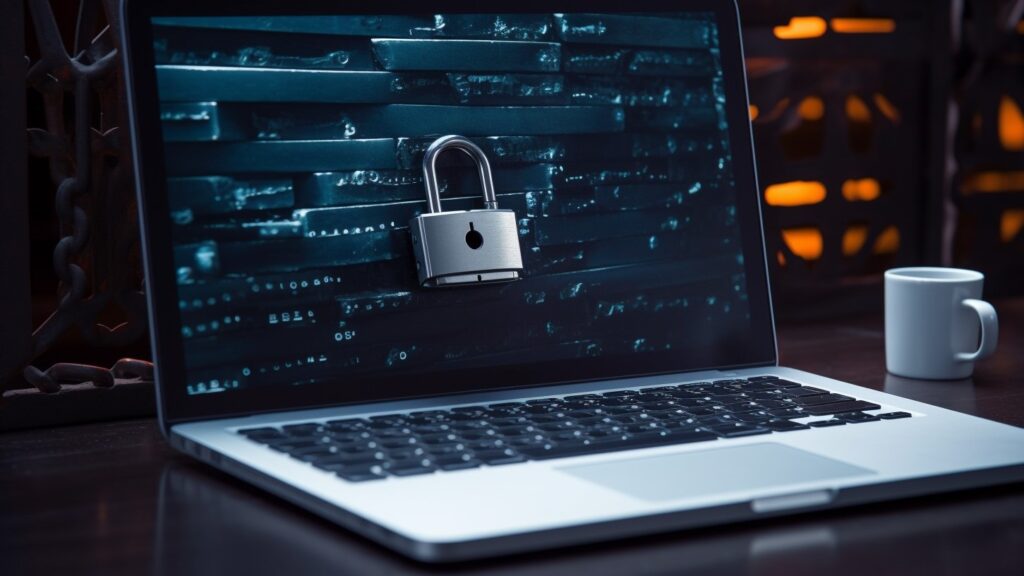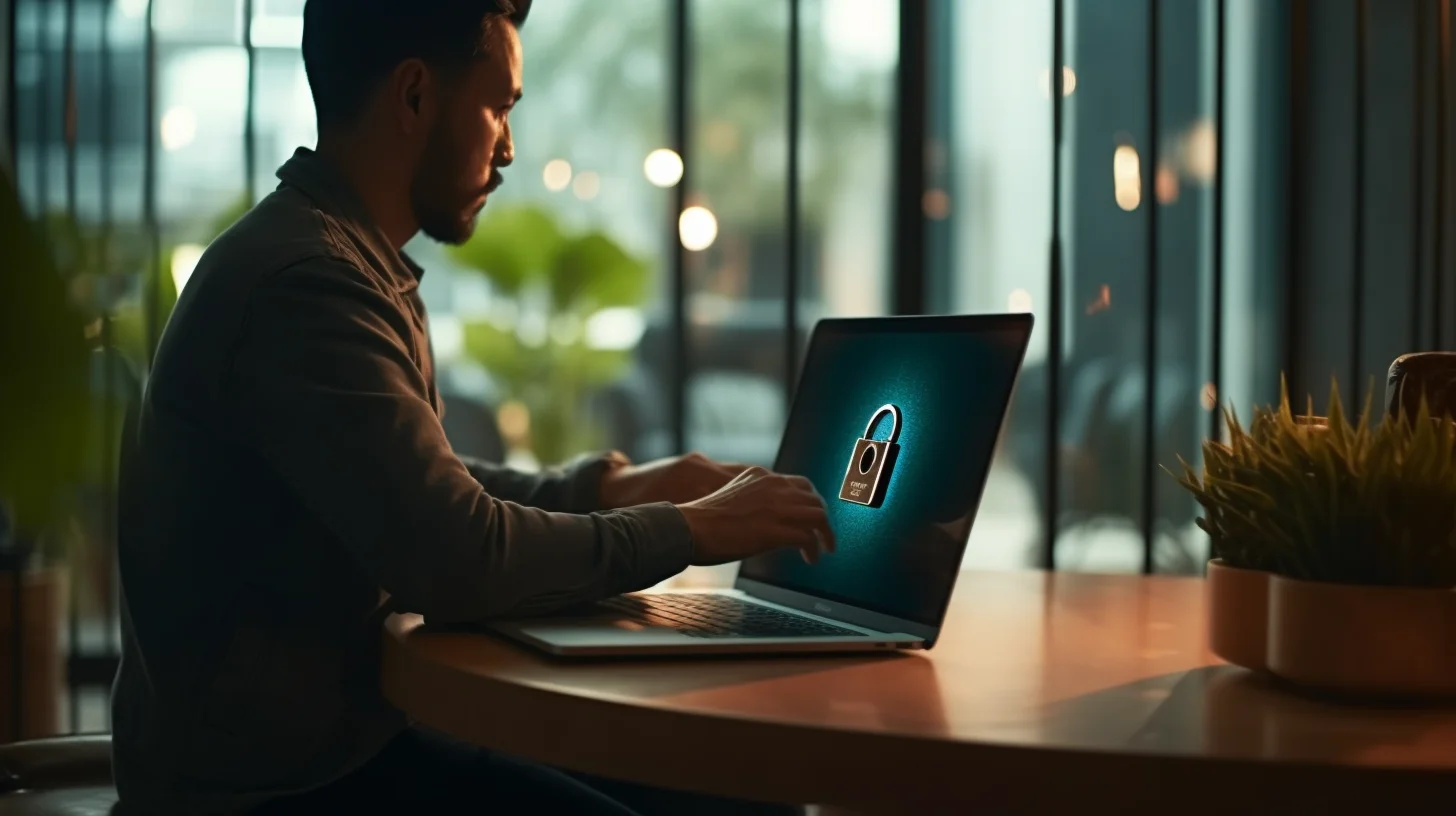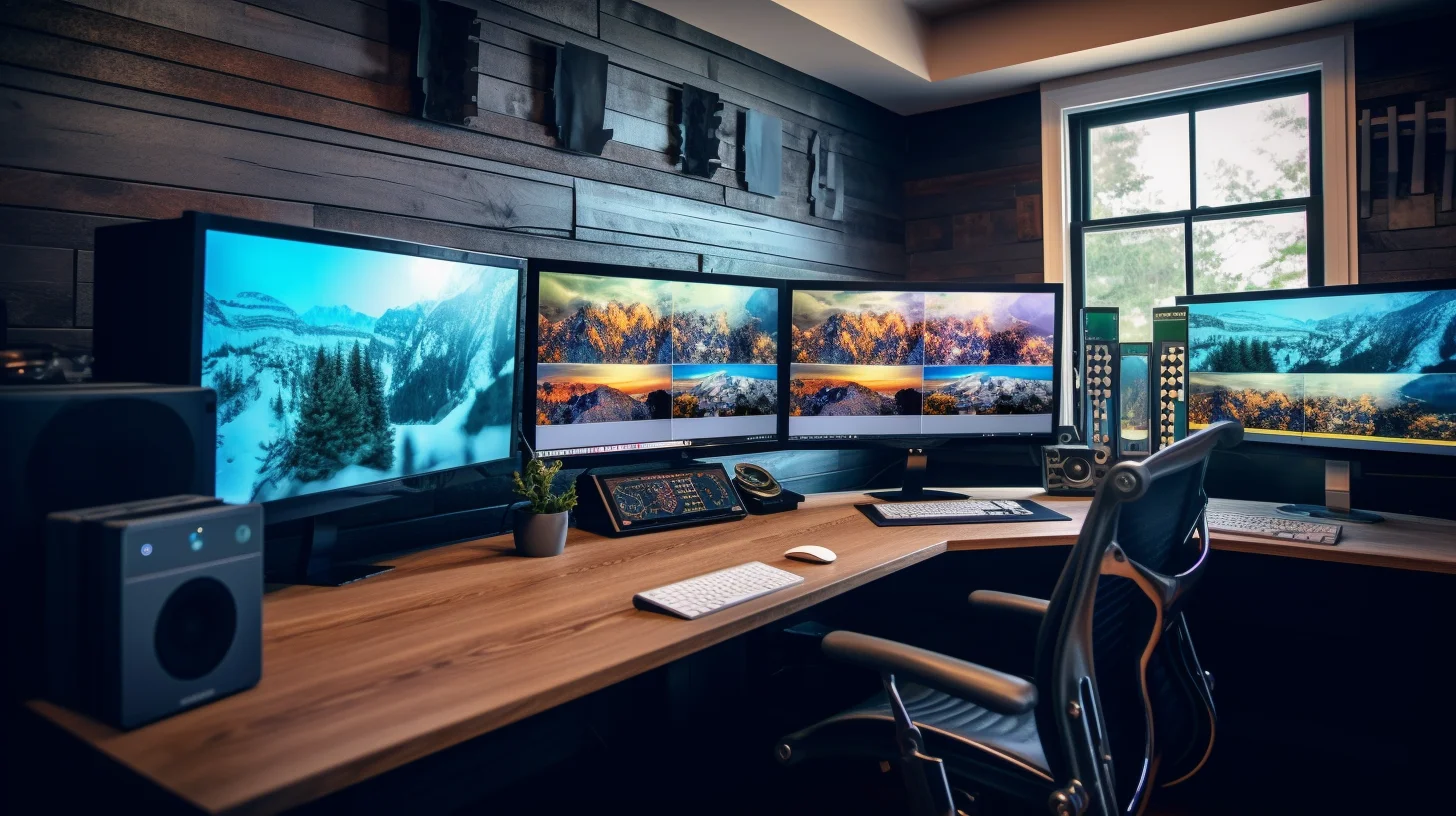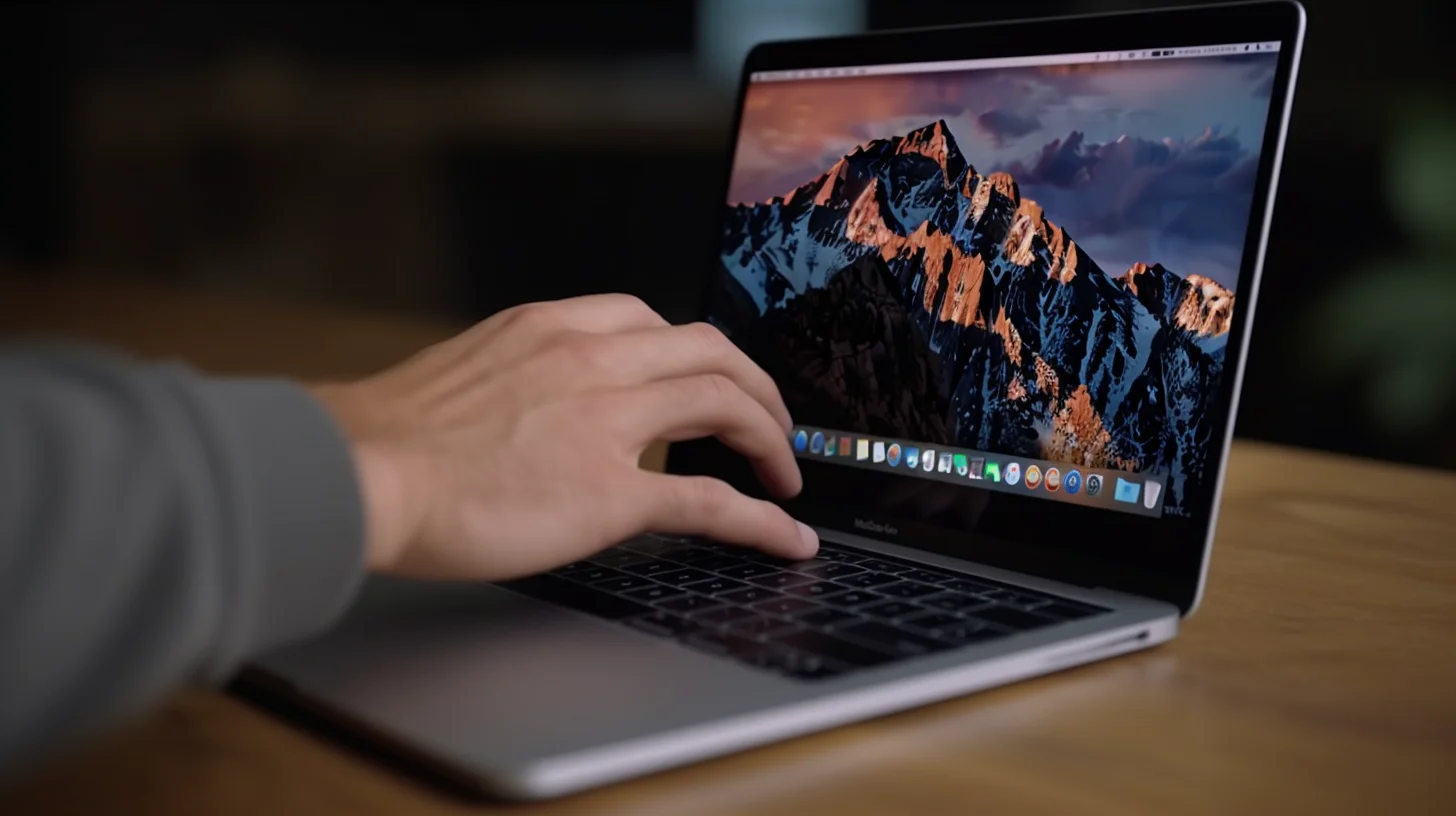Safe under lock and key.

Have you ever wondered how to lock your computer screen to protect your privacy and data? We’ve all been there: a quick run to the coffee machine, but you don’t want someone to secretly take a look at your screen. Don’t worry, I’ll help you lock your computer screen!
In this article you will learn everything you need to know about locking your computer screen for both Windows and Mac systems. I’ll introduce you to some simple steps and handy shortcuts that will help you lock your screen quickly and efficiently. So grab a cup of coffee and let’s get started!
Key points summarized:
- Locking your computer screen is essential for privacy and security, protecting you from unauthorized access to personal and business information.
- Use keyboard shortcuts (Windows key + L for Windows, Control + Command + Q for Mac) for a quick and efficient way to lock your screen.
- Set a strong and unique password to prevent unwanted access and consider additional security methods such as Touch ID or Face ID on a Mac.
Why is it important to lock your computer screen?
I do everything on my laptop. I work on it and I do my private affairs on it. And what is private, I like to keep private.
Locking your computer screen is essential for privacy and security.️ It protects you from unauthorized access to personal and business data, which is important for both you and your employer.

Protection against prying eyes and unwanted access
Locking helps to prevent prying eyes. You never know who is looking over your shoulder! Protecting sensitive information, such as financial data or confidential documents, is crucial to ensure your privacy and avoid potential problems.
Prevent others from accidentally changing your work
Locking your screen also prevents accidental changes to your work. Imagine working on an important project on your best photo editing monitor and someone accidentally walks by your desk, bumps your keyboard and removes an essential component. 😱
By locking your screen, you prevent these kinds of accidents.

Lock computer screen on a Windows PC
There are several ways to lock your Windows computer. Here we discuss two convenient methods.
1. Use the Windows key + L hotkey combination
This hotkey is a simple and fast way to lock your screen. Press the Windows key (the flag on your keyboard) and the L key at the same time. Et voilà, your screen is locked! It’s that simple.
2. Enable screen lock from the Start menu
It is also an option to lock your screen from the Start menu. Click the Start button (the Windows flag) in the lower left corner of your screen. Then select your user account (usually at the top of the menu) and choose ‘Lock’.
This is slightly slower than the shortcut method, but is useful if you can’t find the Windows key or if your keyboard doesn’t have a Windows key.️
3. Set a password for extra security
Setting a password is a smart move for added security. This way you ensure that only you have access to your Windows PC. Whether you use a 27 inch monitor , the best 144hz monitor or a mini PC , follow these steps to set a password:
- Press the Windows key and select the gear icon (Settings).
- Click on ‘Accounts’ and then on ‘Sign-in options’.
- Under ‘Password’, choose ‘Add a password’.
- Enter a strong password, confirm it and add a hint if desired.
- Click ‘Next’ and then ‘Finish’.
Voila! Your Windows PC is now extra protected with a password. 🔐
Lock computer screen on a Mac
Now let’s talk about locking your Mac computer. There are several methods to do this, so choose the one that works best for you!
1. Use the Control + Command + Q keyboard shortcut
The keyboard shortcut Control + Command + Q is a handy way to quickly lock your Mac screen. Follow these simple steps:
- Hold down the Control and Command keys at the same time.
- Press the ‘Q’ key.
Your Mac screen is instantly locked. Easy-peasy !
2. Set up screen protection with a password
A password screen saver is a good option for extra security on your Mac . Especially useful if you turn off your computer screen . Follow these steps to set it up:
- Click the Apple menu and choose System Preferences.
- Select ‘Desktop and screen saver’.
- Click the “Screen Saver” tab and choose a screen saver of your choice.
- Check ‘Ask for password’ and select the desired time.
- Click ‘OK’ to save your settings.
Now your Mac screen is protected with a screen saver and password.
3. Make use of the Touch ID or Face ID feature
Touch ID and Face ID are useful features on your Mac for locking and unlocking your screen. Here’s how they work:
TouchID:
- Go to System Preferences > Touch ID.
- Click on ‘+’ and enter your password.
- Place your finger on the Touch ID sensor to enroll your fingerprint.
FaceID:
- Go to System Preferences > Face ID.
- Click Set Up Face ID and follow the onscreen instructions.
Once you’ve set up Touch ID or Face ID, you can easily lock and unlock your Mac screen with your fingerprint or facial recognition. Super handy! 😎

Tips for quickly and efficiently locking your computer screen
Finally, some practical tips to optimize the locking of your screen:
- Use hotkeys to save time and quickly lock your screen.
- Set up an automatic screen lock to secure your computer when you’re away.
- Choose a strong and unique password to prevent unwanted access.
With these tips, you’ll be all set to efficiently and securely lock your computer screen. Good luck!
Use keyboard shortcuts
Keyboard shortcuts are your best friend when locking your screen. They save time and effort because you don’t have to navigate through menus. To lock your Windows PC, use the Windows key + L . On a Mac, it’s Control + Command + Q .
There are many more useful keyboard shortcuts, such as Alt + Tab to switch between open programs and Ctrl + C to copy. Get to know them and your computer life will become a lot more efficient!
Set up an automatic screen lock
Do you often forget to lock your screen? No problem! it is also an option to set an automatic screen lock. For example, your computer automatically locks after a certain amount of time of inactivity.
On a Windows PC, go to Settings > Accounts > Sign-in options and adjust the Pause screen after option . On a Mac, go to System Preferences > Desktop & Screen Saver > Screen Saver and adjust the Wait Time.
Handy if, for example, you have the best ultrawide monitor on which you do all your work and you want to quickly secure your screen.
Provide a strong and unique password
A strong password is essential for the security of your computer. Choose a combination of upper and lower case letters, numbers and symbols. Make it at least 6 characters long and avoid easily guessed words or phrases.
Also, use unique passwords for different accounts so that if one account gets hacked, the others stay safe. An option to achieve this without remembering it all is to use a good password manager.
Frequently asked questions about locking computer screen
How can I unlock my computer screen?
Unlocking is easy. On a Windows PC, press Ctrl + Alt + Delete and enter your password. On a Mac, press any key, enter your password and press Enter. If you’re having trouble, consider seeking help on how to connect a monitor to your laptop for additional support.
What if I forgot my password?
On a Windows PC, reset your password using a recovery disk or a linked Microsoft account. On a Mac, you can boot into recovery mode and use the Reset Password option. Just make sure you write your password down somewhere safe so you don’t forget it again.
Can I lock my computer screen without a password?
Technically it is an option to lock your computer screen without a password, but it is not recommended. Your screen is then not secured, and anyone can unlock it.
Still want a passwordless lock? Then consider an alternative security method, such as a fingerprint or face scanner. Just keep in mind that this may be less secure, especially if you want to cast your computer screen. Safety first!
Conclusion
After reading this article, you should now be an expert in locking your computer screen whether you are a Windows or Mac user. Don’t forget to lock your screen regularly to protect your privacy and data from prying eyes and unwanted access.
And if you think I missed something or have any questions, don’t hesitate to leave a comment. Good luck keeping your computer safe and don’t forget to check back often for more useful tips and tricks! 😁